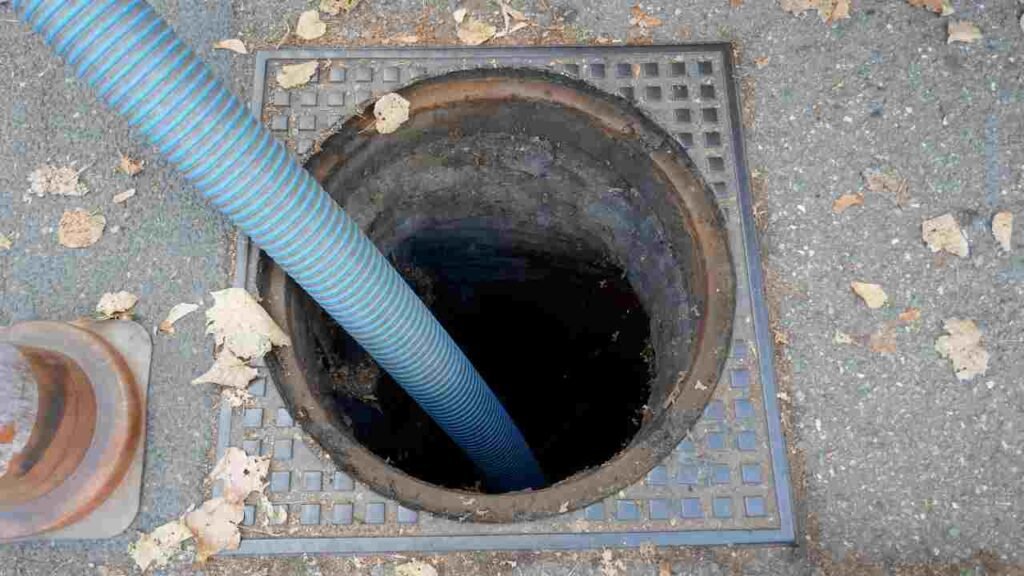
Sewage ejector pumps are key to having a tidy and efficient plumbing system. These gadgets aid in removing wastewater from your home, preventing blockages and guaranteeing good sanitation. We’ll look into the cleaning of a sewage ejector pump and the necessity of regular upkeep in this article.
For cleaning a sewage ejector pump, there are multiple key steps. Initially, you must make certain that the power to the pump is off. This is crucial for your safety and to stop any accidents during the cleaning.
Then, you should manually get rid of any debris or solids that could be clogging the pump. Gloves should be worn here to keep you away from any dangerous pathogens in sewage waste. After that’s done, you can wash the pump itself with a combination of water and detergent.
Keeping your sewage ejector pump in good condition is essential for its performance and resilience. By cleaning it occasionally, you can prevent buildup that may result in breakdowns in the future. Plus, keeping your pump clean helps to stop smells and keep hygienic conditions in your home.
According to a study by the Environmental Protection Agency (EPA), poor maintenance of sewage ejector pumps can cause expensive repairs and health risks due to contaminated water backup.
Understanding the Sewage Ejector Pump
Grasping the function of sewage ejector pumps is essential. These pieces of equipment move sewage from one place to another, usually from a basement to the main sewer line. This helps avoid backups and ensures proper drainage.
To learn more, let’s look at the components. The pump is placed in a sealed container, known as a basin or pit. This collects sewage until it reaches a certain level. When this happens, the pump starts the process of moving the wastewater into the sewer system.
It’s worth noting that sewage ejector pumps are different from sump pumps. Sump pumps are used for groundwater or rainwater, while sewage ejector pumps handle solid waste materials and water. Knowing the difference is important for maintenance and cleaning.
And here’s an interesting fact: some models of sewage ejector pumps come with alarm systems. These alarms alert homeowners or property managers if there’s an issue with the pump or if the water level in the pit is too high. These safeguards help ensure efficient operation and avoid problems.
Necessary Tools and Materials
Need to get your sewage ejector pump clean? You’ll need a few tools and materials. Here’s what you’ll need:
- Wrench: To loosen bolts or screws.
- Screwdriver: To remove any covers.
- Plunger: To unclog any blockages.
- Bucket: To collect wastewater or debris.
- Cleaning Solution: To eliminate buildup and odors.
- Rubber Gloves: To protect hands from wastewater.
And, don’t forget safety! Wear protective eyewear and a face mask. Follow safety guidelines and consult a pro if needed.
Time to take action! Don’t delay cleaning – it can lead to costly repairs and system failure. Take control of your pump’s cleanliness and ensure optimal performance.
Step 1: Turn off the Power
Safety is key when it comes to dealing with electrical equipment, such as a sewage ejector pump. Therefore, the first step must be to turn off the power. Here’s how:
- Locate the electrical panel.
- Identify the circuit breaker for the pump.
- Switch it off by flipping it from “on” to “off.”
- Check the pump lights and indicators to ensure the power is off.
- Use a non-contact voltage tester to double-check.
Take a second to appreciate why this step is so important. By turning off the power, you’re protecting yourself from electric shocks or accidents. So, make sure you follow this step whenever you’re cleaning the pump. Neglecting it could lead to harm, electrocution, or damage. Don’t forget – safety first! Switch it off!
Step 2: Remove the Pump’s Lid
Safety first! Disconnect the power supply before attempting to remove the lid of the sewage ejector pump.
Locate the screws or bolts that are securing it in place.
Use a screwdriver or wrench to undo them.
Carefully lift off the lid, and set it aside.
Once it is removed, you can then move on to cleaning and maintaining the system.
It’s important to check the manufacturer’s manual for unique instructions for your particular pump model.
Regular maintenance can prevent costly repairs and help prolong its life.
HomeAdvisor, a trusted home improvement website, states that regular maintenance of a sewage ejector pump helps avoid backups and keeps your plumbing running smoothly.
Step 3: Inspect and Clean the Pump
Maintaining the functionality of a sewage ejector pump is important to avoid blockages and malfunctions. Here’s a guide to do it right:
- Turn off the power supply to be safe.
- Take off the lid/cover; be sure not to damage anything. Remember the lid keeps out dirt & debris.
- Inspect the impeller blades for signs of wear/damage. Use a flashlight if needed.
- Check for hair, wipes, and other foreign objects that may have built up. Remove them carefully.
- Clean the pump chamber with a non-toxic disinfectant or mild detergent mixed with water. Scrub thoroughly.
- Rinse off and dry all parts before reassembling.
Regular inspections and cleaning will extend the lifespan and ensure optimal performance. Safety should be a top priority – seek professional advice if unsure. Fun Fact: Neglecting maintenance can lead to premature pump failure and costly repairs.
Step 4: Check the Float Switch
The float switch is a key part of a sewage ejector pump. Checking it is important for the pump to function correctly. To check it, these four steps should be taken:
- Check the float with your eyes. Make sure nothing is blocking it or keeping it from moving freely.
- Test the switch connection. Make sure it is secure to the pump control panel or alarm system. Fix or replace any loose or damaged wires.
- Check if the float switch is working. Lift it up and down to see if it turns the pump on/off. If not, inspect or replace it.
- Clean or change the float switch if it is damaged or broken even after troubleshooting. Debris or fouling can build up, so refer to manufacturer guidelines or contact a professional.
Checking and maintaining your float switch is essential. It can save you from possible messes and costly repairs, and also ensure a healthy environment in your home. Don’t forget this step!
Step 5: Reassemble and Test the Pump
Reassembling and testing the pump is key to its proper functioning. Follow these steps for success:
- Place the impeller onto the shaft, correctly aligned.
- Use a wrench to securely tighten the impeller nut. Avoid overtightening as it can damage the components.
- Reattach the pump housing to the base, making sure it fits snugly.
- Secure the pump housing in place with a screwdriver or wrench, depending on the type of fasteners used.
- Connect all electrical wires that were disconnected during disassembly, making sure they are properly reconnected and tightened.
- When everything is reassembled, test the pump. Plug it into a power source and turn it on briefly to check for proper operation.
Remember to be safe and follow manufacturer guidelines throughout this process.
Manufacturers provide specific assembly and testing instructions for each sewage ejector pump. Therefore, always check the user manual or seek professional help if you have any difficulties or doubts.
Finally, let’s take a moment to appreciate the progress of sewage ejector pumps. They have been vital in keeping cleanliness and preventing health risks for centuries. From primitive hand-operated pumps used in old civilizations to modern electric-powered versions, sewage ejector pumps have revolutionized waste management around the world.
Maintenance Tips
Regular maintenance is key for your sewage ejector pump’s proper functioning and long life. Here’s what to do:
- Inspect regularly: Look for any wear and tear, like leaks or cracks.
- Clean the filter: It can get clogged with debris, reducing efficiency. Get rid of dirt and debris.
- Flush the system: Clearing built-up residue or sludge will help the pump operate better.
- Check the float switch: Make sure it moves freely and isn’t blocked.
- Maintain venting: Let air escape, avoiding suction issues. Examine the vent pipe for any blockages.
To go further, consider these:
- Test the backup power source, e.g. battery or generator. Plus, have a spare float switch ready.
Neglecting maintenance can lead to costly repairs or even pump failure. Don’t risk your home’s sanitation and functionality – start maintenance now! It’s worth it for your safety and peace of mind.
Conclusion
It’s vital to clean a sewage ejector pump. Regular maintenance helps the pump last longer and run better. Wear safety gear, like gloves, goggles, and clothes, when cleaning. Also, turn off the power before starting.
- Remove any large waste or debris with a shovel or scoop.
- After that, flush the system with water or a cleaner.
- Inspect the float switch, too. If it’s not working right, get a pro to fix it.
This avoids expensive repairs or pump failure.
Frequently Asked Questions
1. How often should a sewage ejector pump be cleaned?
It is recommended to clean your sewage ejector pump at least once a year to maintain its optimal performance.
2. What are the steps to clean a sewage ejector pump?
To clean a sewage ejector pump, follow these steps:
1. Disconnect the power supply
2. Empty the pump chamber
3. Remove and clean the pump float and switch
4. Inspect and clean the impeller
5. Flush the pump chamber and discharge pipe
6. Reassemble and reconnect the pump
3. Can I clean a sewage ejector pump myself or do I need professional help?
You can clean a sewage ejector pump yourself if you have the necessary tools and knowledge. However, if you are unsure or uncomfortable with the process, it’s best to seek professional help to avoid any potential damage.
4. How can I prevent clogs in my sewage ejector pump?
To prevent clogs in your sewage ejector pump, follow these preventive measures:
1. Avoid flushing non-biodegradable items
2. Use toilet paper that is septic-system friendly
3. Regularly inspect and maintain your pump
4. Install a lint trap on your washing machine
5. What are the signs that my sewage ejector pump needs cleaning?
Some signs that indicate your sewage ejector pump requires cleaning are:
1. Foul odors coming from the pump
2. Slow drainage or backups in your plumbing system
3. Unusual noises or vibrations from the pump
4. Increased power consumption
6. Are there any safety precautions to follow while cleaning a sewage ejector pump?
Yes, it’s important to take the following safety precautions while cleaning a sewage ejector pump:
1. Disconnect the power supply before starting
2. Wear gloves and protective eyewear
3. Avoid inhaling fumes from the pump
4. Use caution when handling sharp objects
5. Work in a well-ventilated area
